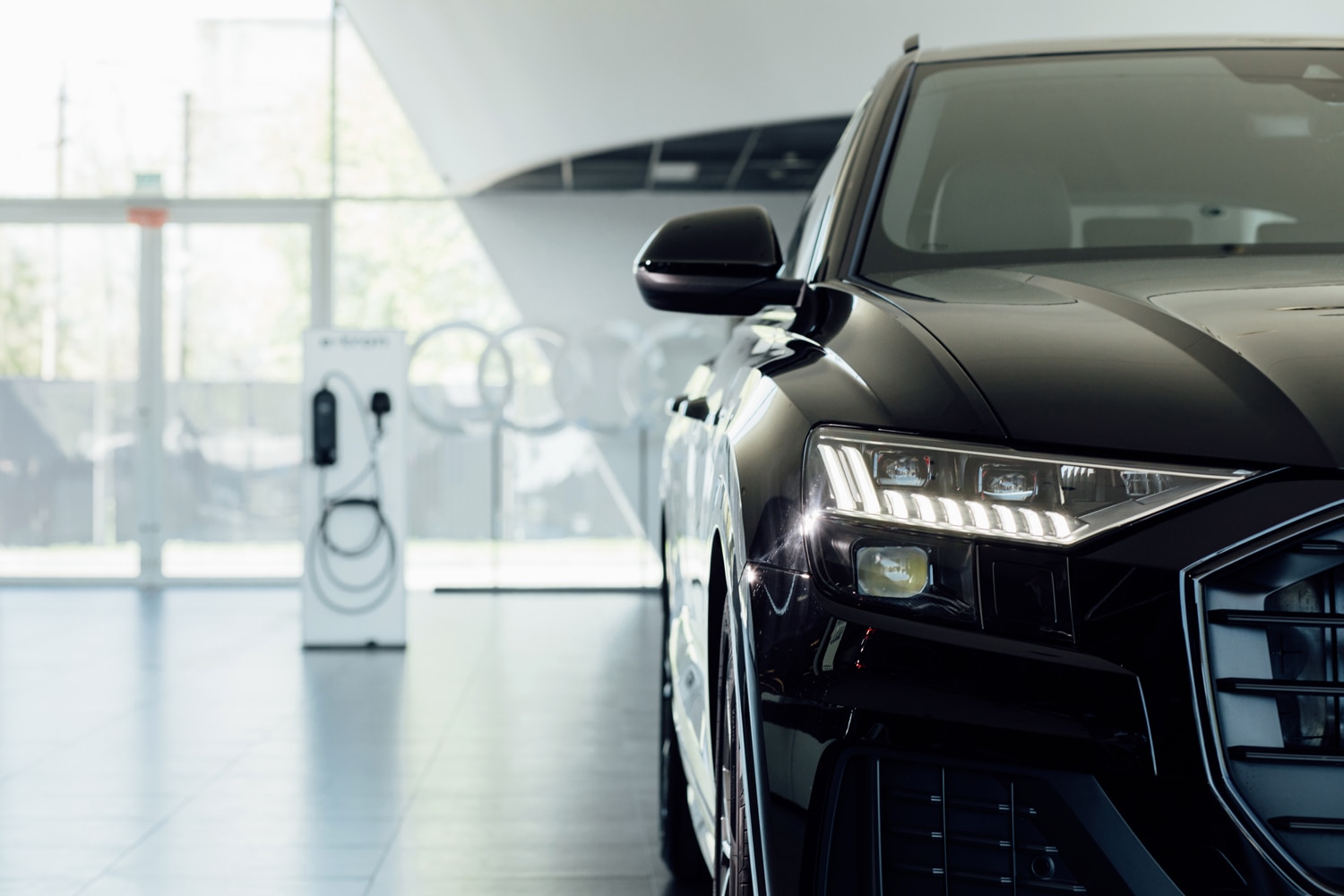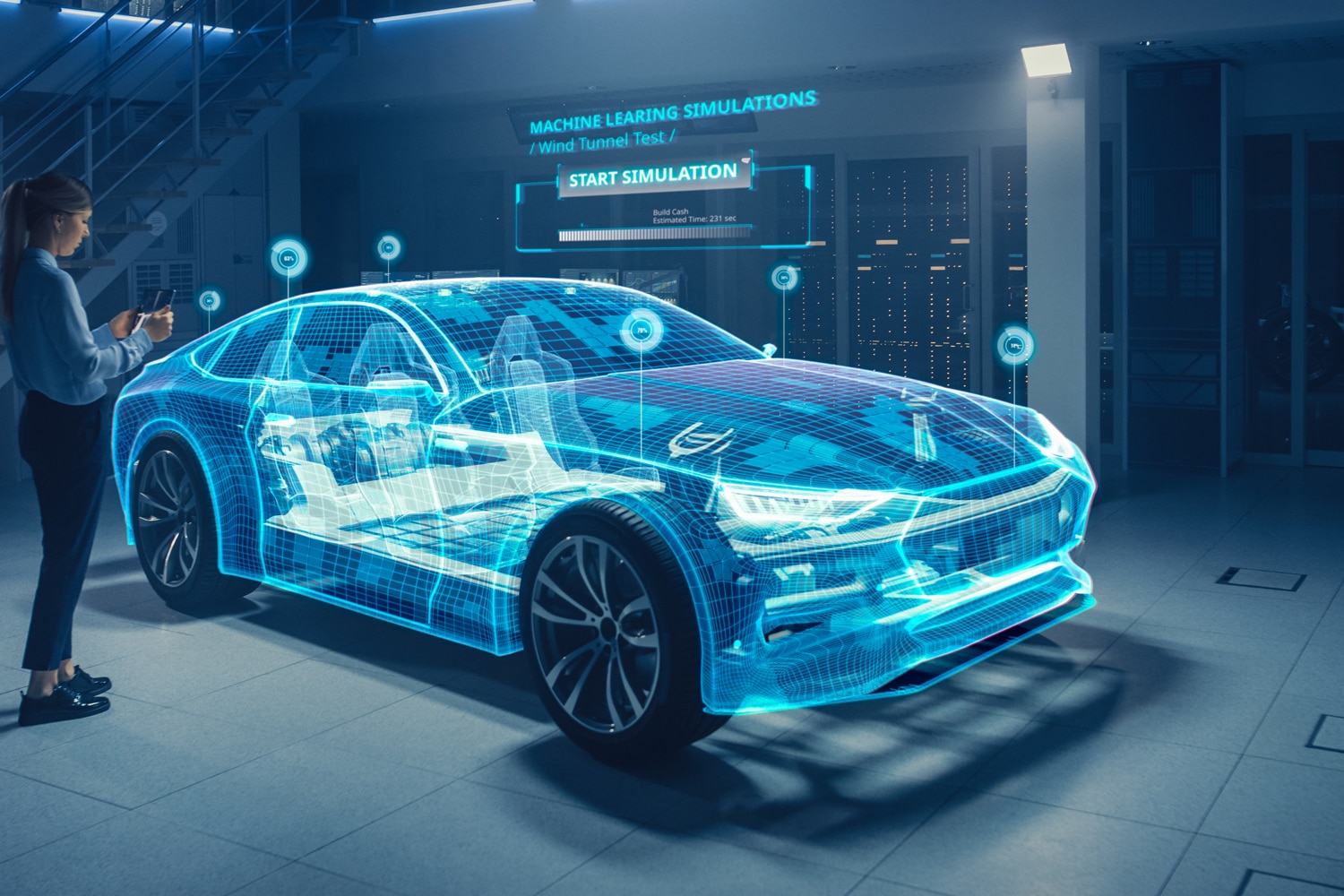Can EVs and Self-Driving Tech Make Cars Cool Again?
There's a tidal wave of EVs and advanced technology just over the horizon. As it begins flooding the market, will it reignite America's love affair with the car?
 Shutterstock
Shutterstock
The auto industry used to excite people. Teenagers couldn't wait to get their licenses, car shows attracted enormous crowds, and the public awaited the latest models with great anticipation, dotting showroom windows with nose- and fingerprints as they tried to catch a glimpse. But that was roughly half a century ago. Somewhere along the line, the auto industry stopped making aspirational products and instead built commodities. Innovating gave way to badge engineering, wherein multibrand manufacturers sell the same vehicle with different labeling and minor trim changes. Cars—once the essence of cool—became little more than appliances.
But electrification and autonomous driving have the potential to change that, as we’ve seen most clearly with Tesla’s meteoric rise. Think back to 2009. Battered by bankruptcies, the Detroit automakers were deeply uncool. A BMW or Mercedes was hardly a status symbol. The automakers competed in rigidly defined segments with products that had nearly identical attributes. But then Tesla came along and shook things up in 2012 with its tech-laden sleek Model S. Driving a Tesla was like carrying an iPhone in a world of Razrs. It wasn’t the first EV, but it was arguably the first desirable EV. It showed automakers that drawing new shapes, building in performance and capability, and developing novel features could cause the masses to take an interest. And they are—people are lining up by the hundreds of thousands for the chance to buy vehicles they've never driven, let alone seen in person. While the queues are virtual these days, the scene resembles those long lines outside Apple stores during the iPhone’s heyday.
EVs Are No Longer Niche
If all goes to plan, nearly 100 EVs will debut by the end of 2024, including several models—such as GMC’s Hummer EV, Ford’s F-150 Lightning, and upstart Rivian’s R1T—in the ever-popular pickup-truck segment. We’re only getting started. As more and more places make commitments to outlaw the sale of new vehicles powered by internal-combustion engines, automakers have no choice but to up their EV game. For instance, California—which is among the world’s largest car markets—will allow automakers to sell only zero-emission vehicles in the state come 2035. Those regulations and the accompanying climate concern have helped thrust EVs into the mainstream media, giving automakers a stage to show off their battery-powered creations in front of Americans who normally wouldn't pay attention to new model launches.
Americans seem to be intrigued, although not necessarily just because the vehicles are electric. The Hummer EV, F-150 Lightning, and Rivian R1T aren't cool because they're electric. The Hummer is cool because it's a 1,000 horsepower snub to sensibility, with a removable roof and the ability to crab-walk around off-road obstacles. The Ford is cool because it can power your house during an outage. The Rivian is cool because it can wade through three feet of water on its way to a remote campsite where you can cook breakfast on a camp kitchen powered by its battery. This level of innovation, for the first time in 50-plus years, feels like the kind of dreaming and ambition Detroit once had. The fact that investors are interested in Ford and GM suggests that outsiders believe these automakers are on to something, too. That's a dramatic comeback for companies that were near death little more than a decade ago.
 Shutterstock
Shutterstock
Focused on Tech
Tech is king today. Everyone has a smartphone and awaits the latest feature that makes upgrading to a new one worth the expense. That's the kind of anticipation automakers want to stoke.
They’re also after the tech itself. We’re seeing big screens everywhere. Tesla builds video games and streaming-video services into its cars, suggesting that a parked car won't necessarily be an unoccupied car. And the ability to connect to your vehicle from an app means that, like Twitter, you can have a constant connection to your car wherever you go.
What’s more, with recent advancements in sensor-based technology, automakers have begun to explore fantastical ideas again, rethinking the motoring experience and how drivers interact with vehicles. The end goal is full autonomy, where the vehicle can transport you from point A to B with no other input besides an address. Until recently, this always seemed like a pipe dream. Automakers have dangled autonomous driving in front of Americans for ages. Back in 1956 at its Motorama auto show, GM showed a fictional film depicting its gas-turbine-powered concept car taking over control from the driver, who sits back and smokes a cigar. But while we’ve yet to reach that level of autonomy today, many vehicles come equipped with the low-hanging technological fruit—namely lane keeping and adaptive cruise control—that will eventually support it. Cars can brake, steer, and accelerate for you, and some even allow the driver to remove their hands from the wheel in certain circumstances. It’s no longer so hard to believe that one day the steering wheel could disappear altogether.
The Future Looks Bright
Can automakers sustain the streak they're on? As competition heats up, can they continue to make their EVs seem special with unique styling and features? Or will they lapse into the old ways, creating segments full of vehicles with little differentiation? Inevitably, there will be a crowd field of EVs designed and built for disinterested commuters. But to keep Americans at large excited and engaged, automakers will need to continue pushing the envelope in design, technology, and capabilities. Given our interest—and more importantly, our investment—in their latest products, we suspect automakers will stay the course for as long as they can.
Written by humans.
Edited by humans.
 Jim Resnick
Jim ResnickFrom racing exotic sports cars, to ranking new cars, to peeling back layers of cover up in an exhaust emissions scandal, Jim has chronicled the automotive sector for decades. Jim has also worked inside the corporate headquarters of three carmakers, and therefore understands how the automotive sausage is really made. But Jim’s affinity for vehicles takes a back seat to finding the truth and the cultural implications of modern transportation. He has also lectured at universities to engineering and policy students and faculty on the industry’s relationship with legislation in the wake of the diesel exhaust emissions scandal several years ago. Put simply, Jim reports on autos, mobility, tech, car culture, and the traffic jam of topics within.
Related articles
View more related articles